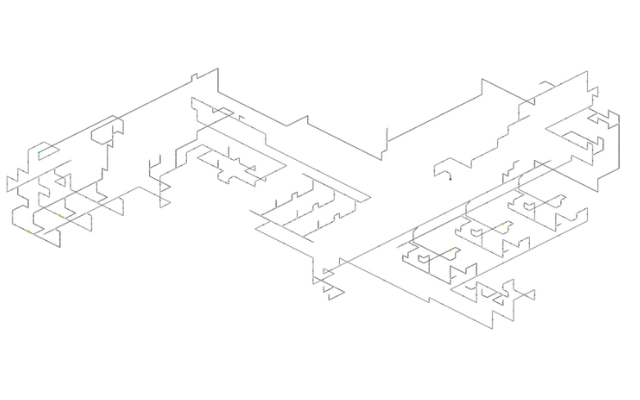Contributor: Applied Flow Technology
Wood was tasked to conduct a hydraulic transient analysis (waterhammer) of a crude-oil export system for a multinational oil and gas company. The system is located on a new production platform in the Gulf of Mexico and exports up to 140,000 BOE (barrels of oil equivalent) per day to a subsea pipeline network. The analysis was required to evaluate pressures surges and transient forces that can occur during a variety of operating scenarios.
Using AFT Impulse, Wood engineer, Joel Neville, modeled the upstream portion of the system (Figure 1). The response of the pipeline during system start-up and shut down was simulated using AFT’s Infinite Pipe feature of the assigned pressure junction with transient pressure input. The transient pressure input was verified against a ‘mock’ pipeline system scenario to simulate the system’s reaction during start-up or shut down events. The upstream model also included two sets of pumps (booster and delivery), as well as heat exchangers, metering skids, minimum flow recycle and oil buyback lines.
The primary engineering firm used AFT Fathom to complete the hydraulic simulations of the system. Although the AFT Fathom model was not utilized for the transient analysis, hydraulics results were used to verify the base scenario of the transient model.
In addition to the Infinite Pipe feature, control logic loops were used to capture the various pump trip and valve closure conditions. Using an isometric model layout allowed for easy identification of transient force sets that assisted the primary engineering firm in applying these loads to a pipe stress analysis. The Impulse Scenario Manager allowed for easy replication of the scenario to assess and compare the two cavitation methods and assist in the evaluation of transient forces.
One of the most interesting features of this model is the complexity of the layout, which is due to the extremely limited space available on an offshore platform. The isometric view highlights the complexity of offshore piping systems, while also providing clarity on the location of particular issues.
To implement the project’s well-defined control system design, some aspects of the model had to be manipulated, such as replacing the recycle control valve junction with a regular valve junction to allow the input of a particular transient event.
Recommendations were provided to the customer to address piping over-pressure concerns and reduce transient forces. In some areas, pressure pulsations were reduced by 75% (Figure 2). Transient forces saw a similar decrease in magnitude.





